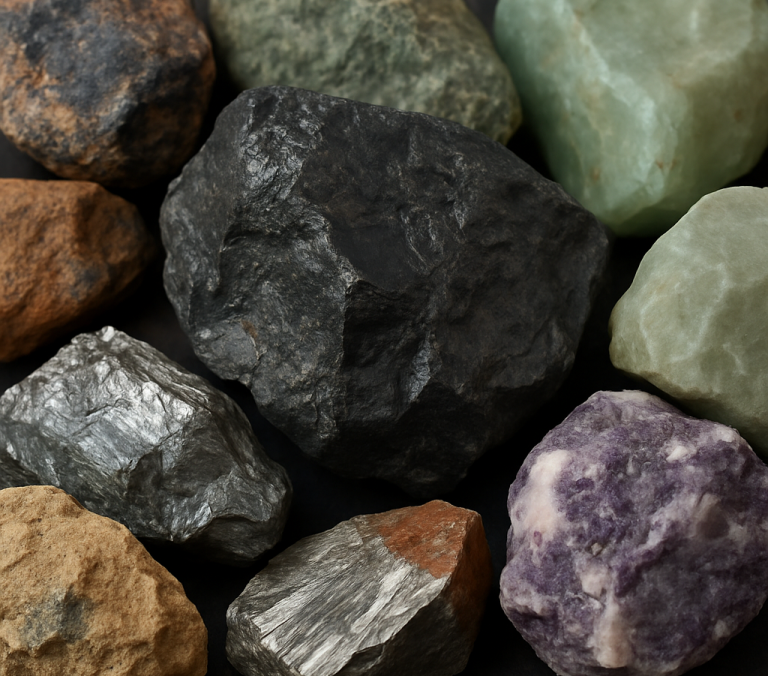
Rare Earths and Renewable Rivalries
As the world races towards a net-zero future, rare earth elements are emerging from obscurity to become essential, and increasingly contested, resources. Their central role in clean technologies is now colliding with geopolitical tensions, exposing vulnerabilities that could slow the energy transition.
As the world accelerates its shift towards net zero, rare earth elements (REEs) have quietly become the backbone of clean energy technologies. Although many rare earth metals are actually quite common, they are called “rare” because they are seldom found in large enough amounts to be extracted easily or economically. These 17 chemically similar metals are essential to the performance of electric vehicles, wind turbines, advanced electronics, and more. But their supply chains are now increasingly entangled in geopolitical friction, raising concerns about the future pace and cost of the global energy transition.
China dominates the rare earth market, accounting for approximately 70% of global extraction and 90% of processing capacity, where raw ore is converted into usable materials for industry. This bottleneck gives China substantial strategic leverage over key global supply chains. Other players in rare earth extraction include Australia, the United States (which still relies heavily on China for processing), Vietnam, Brazil, Malaysia, and Canada, which are working to develop alternative supplies and reduce dependency on Chinese refining. Despite these efforts, the global clean energy economy remains highly exposed to disruption in rare earth markets.
Of the 17 rare earths, a few play especially crucial roles in clean technology:
- Neodymium (Nd) and Praseodymium (Pr) are key ingredients in high-strength permanent magnets used in electric vehicle (EV) motors and wind turbines.
- Dysprosium (Dy) and Terbium (Tb) enhance the thermal performance of those magnets, making them suitable for high-performance applications in transport and energy.
- Samarium, Yttrium, Scandium, and Gadolinium also support a range of technologies — from LED lighting and batteries to nuclear reactors and alloy reinforcement for critical grid infrastructure.
These materials are fundamental to the global effort to decarbonise transport, power generation, and industrial systems.
Geopolitical tensions between the United States and China have brought rare earths into sharp focus. While the United States initially spared most critical minerals from recent tariff rounds, China retaliated by imposing export controls on a range of rare earth elements, including dysprosium, terbium, samarium, yttrium, scandium and gadolinium (highlighted in bold above). Given the use cases mentioned, this has significant consequences for clean energy technology.
Clean energy developers in the US are already squeezed by cost inflation, while also facing higher interest rates, labour shortages, and uncertain subsidy landscapes. These new restrictions add another layer of cost and complexity to already fragile supply chains. Tighter mineral supply risks higher EV motor costs, wind power project delays or cancellations as component costs surge, delays to essential grid network upgrades as well as increased prices for devices like sensors, drones, and infrared monitors which are essential for tracking emissions and verifying carbon credits. REEs are also crucial for a range of defence technologies.
Efforts are under way to build more resilient supply chains. The United States is investing in new refining capacity and partnering with allies like Australia and Ukraine to develop alternative sources of rare earths. The European Union and the UK are pursuing similar strategies, recognising that rare earths are not just economic commodities, but national security priorities. In March 2023 the EU introduced the Critical Raw Materials Act, which aims to:
- Ensure that by 2030, the EU can extract at least 10% of its annual consumption of strategic raw materials domestically.
- Process at least 40% of its annual consumption within the EU.
- Recycle at least 25% of its annual consumption.
The Act also seeks to diversify imports so that no more than 65% of any strategic raw material comes from a single third country.
While Europe possesses some REE deposits, they are underdeveloped. Notably, Sweden's state-owned mining company LKAB announced the discovery of over 1 million metric tons of rare earth oxides in the Kiruna area, marking the largest known deposit in Europe. Additionally, countries like Norway and Estonia have potential REE resources, but extraction and processing capabilities remain limited. The EU is also exploring partnerships with countries like Ukraine and Serbia, which have untapped mineral reserves, to diversify its supply chains.
Rare earth elements may be hidden in the ground, but they’re now firmly on the radar of policymakers and clean energy strategists alike. As global competition heats up over these critical resources, securing supply chains will be just as important as cutting emissions. And with names like “neodymium” and “praseodymium” making their way into cabinet briefings, don’t be surprised if a few politicians start stumbling over more than just policy. Long-term resilience will depend on diversifying sources, building domestic capabilities, and recognising that the future of clean energy is as much about minerals and manufacturing as it is about wind and sun.
©Copyright. All rights reserved.
We need your consent to load the translations
We use a third-party service to translate the website content that may collect data about your activity. Please review the details in the privacy policy and accept the service to view the translations.